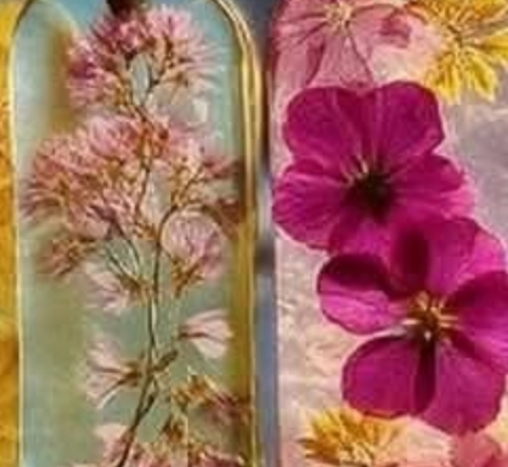Here’s your fully detailed and beautifully structured recipe profile for Bioplastic Suncatchers, complete with all requested sections and the wide line removed:
Introduction
🌞 We stirred, poured, and watched the sunlight dance through our homemade suncatchers—each one a tiny masterpiece made with love and color.
Bioplastic suncatchers are an eco-friendly, kid-safe craft project that bridges art and science. Using simple kitchen ingredients, this project creates translucent, flexible discs that mimic stained glass when held up to the light. It’s not just a fun and creative afternoon activity—it’s a chance to spark conversations about sustainability, art, and nature.
Origin and Cultural Significance
The concept of bioplastics originated from a growing global awareness of plastic pollution and the need for renewable, biodegradable alternatives. While the idea of creating home-based bioplastics isn’t new, it gained popularity in eco-education and DIY crafting communities. Bioplastic suncatchers, specifically, are a modern twist on traditional stained glass crafts—infused with environmental consciousness and sensory play for children and adults alike.
Suncatchers themselves have long held a place in decorative culture, especially in North America and parts of Europe, symbolizing light, clarity, and seasonal transition. Made from repurposed or sustainable materials, bioplastic suncatchers elevate the tradition with mindful innovation.
Ingredients Quantity
Bioplastic Suncatchers (Makes 2–3 medium suncatchers)
- ½ cup water
- 2 tablespoons cornstarch
- 1 tablespoon white vinegar
- 1 tablespoon unflavored gelatin
- Natural or food-safe coloring (e.g., beet juice, turmeric, spirulina, or food coloring)
Optional Decorative Additions:
- Fine glitter
- Flower petals
- Tissue paper bits
Additional Supplies:
- Non-stick surface (plastic sheet, silicone mat, or parchment paper)
- Hole punch
- String or suction hook for hanging
Optional Additions
- Essential oils (1 drop) – Add for a subtle scent.
- Glow-in-the-dark pigment – For nighttime radiance.
- Pressed herbs – Mint, lavender, or rosemary add beauty and aroma.
- Recycled tissue paper – Adds texture and eco-conscious detail.
Tips for Success
- Mix Smoothly: Whisk the cornstarch, water, vinegar, and gelatin thoroughly before heating to prevent lumps.
- Low, Gentle Heat: Avoid boiling—slow and steady heat will give you a better consistency.
- Thin Layers Dry Faster: Spread the mixture thinner for quicker and more even drying.
- Decorate Quickly: Once poured, add decorations before the mixture begins to set.
- Humidity Affects Dry Time: A fan or dehumidifier can help speed up the drying process.
Instructions
- Prepare the Bioplastic Base
In a small saucepan, combine water, cornstarch, vinegar, and gelatin. Stir until smooth and lump-free. - Heat the Mixture
Place the saucepan over medium-low heat. Stir constantly for 3–5 minutes until the mixture becomes thick, glossy, and gel-like. Remove from heat. - Add Color & Decorate
Divide the mixture into separate bowls. Add natural or food-safe coloring and mix. Pour onto a non-stick surface in a thin layer. Swirl with a toothpick, or press in petals, glitter, or tissue for a stained-glass effect. - Dry Completely
Leave the suncatchers to dry at room temperature for 24–48 hours. Flip them halfway through for even drying. - Hang Your Art
Once dry and flexible, punch a hole at the top. Thread with string or add a suction cup hook. Hang in a sunny window and enjoy!
Description
Bioplastic suncatchers are translucent discs of color and texture that catch the light beautifully when displayed in windows. Their slightly gummy flexibility makes them safe for children to handle, while their organic ingredients mean they’re biodegradable—an ideal choice for eco-conscious crafters. Each one is as unique as a fingerprint, making this craft perfect for personalization and seasonal decoration.
Nutritional Information
(This is a non-edible craft item; nutritional values are not applicable. All ingredients are food-safe, but the finished product is not intended for consumption.)
Conclusion
Bioplastic suncatchers offer a blend of creativity, science, and sustainability in one simple yet enchanting DIY project. Whether you’re working with kids, teaching environmental science, or just looking to add some eco-charm to your home, these colorful creations shine bright—literally and symbolically. Plus, they decompose safely over time, leaving only fond memories behind.
Recommendation
Use this project for:
- Rainy day activities
- Earth Day classroom lessons
- Nature-themed birthday parties
- Mindful crafting for adults
Pair this activity with a short discussion or worksheet on plastic waste and sustainable alternatives for a meaningful educational experience.
Embracing Healthful Indulgence
Even though this isn’t a food recipe, bioplastic suncatchers embody a form of healthful indulgence for the mind and spirit. They promote mindful creativity, reduce plastic use, and inspire connection with nature and light. In an age of digital saturation, there’s something soul-nourishing about mixing, pouring, and waiting—letting the sun complete your art.
Let me know if you’d like this in a printable PDF craft sheet or need a version adapted for classroom use!

